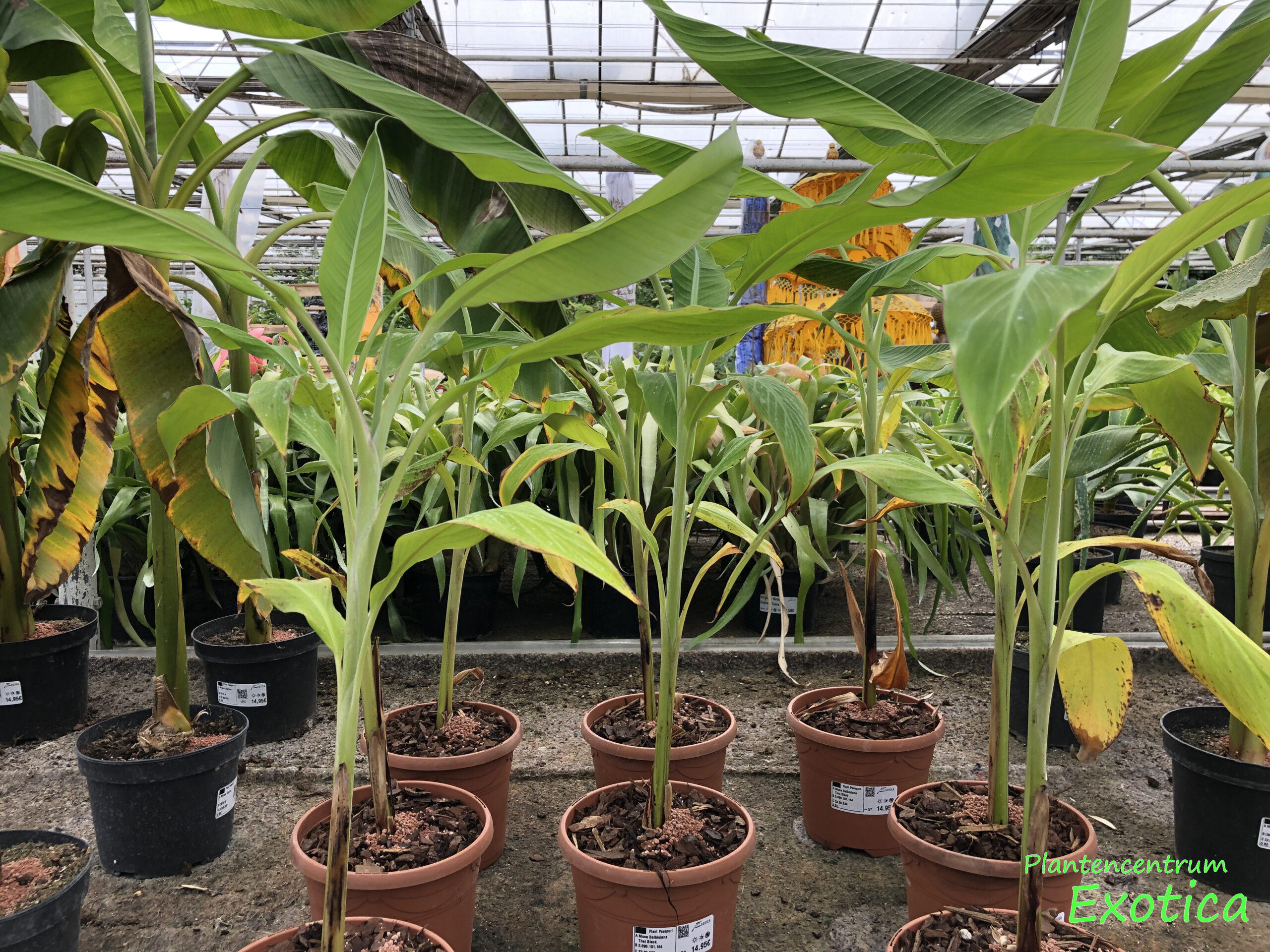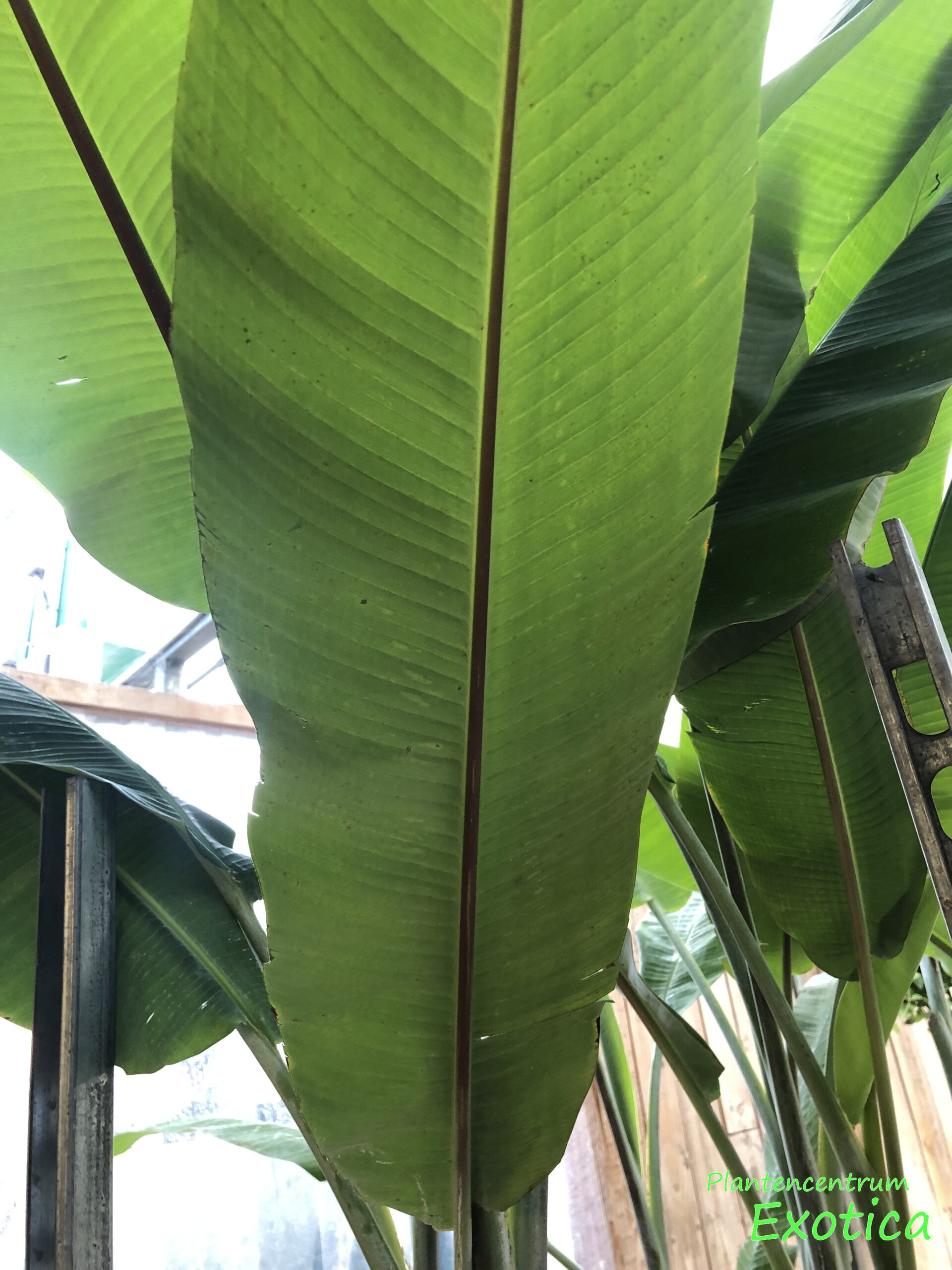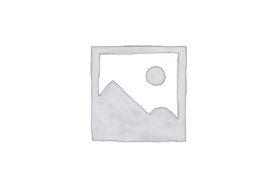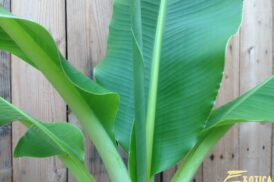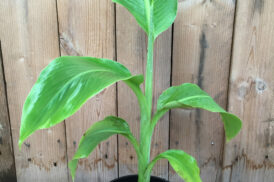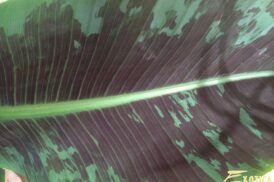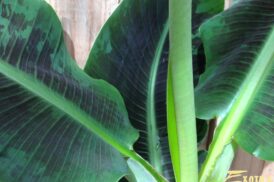Musa Cheesmanii
Attention! Leaves are partly cut off for transport,
Due to the high growth rate, the size of the plant can vary throughout the year.
| Min Temp : | -10°C moderately hardy |
| Location: | Sunny / Partial shade |
| Water requirements : | Medium to high |
| Flowering period : | – |
| Scented : | No |
| Edible: | No |
| Use: | Terrace / Container plant / Open ground |
| Evergreen: | No |
| Height: | Up to 2m and more |
Description
A banana is a monocotyle (monocotyledonous) and belongs taxonomically to the genus Musa and is the largest herbaceous plant in the world. The leaves are in a spiral. The most commonly cultivated group variety Cavendish can grow to more than three metres in height and the Musa ingens species can even reach a height of twelve metres. The plant makes a false trunk of superimposing, wing-like broadened petioles, which is why it is also called a banana tree. The false trunk of Musa ingens can reach a size of three meters.
The banana is one of the oldest cultivated crops in the world. In Buddhist scriptures, the banana can be found as early as the sixth century BC. Commercial banana production began in Costa Rica around 1871 by an American engineer.
There are about 400 varieties worldwide, of which the Cavendish is the most important for the export of fresh table bananas. The largest banana collection in the world can be found in the tropical plant breeding lab in Leuven.
The leaves of the banana are used for roofing and fibres are extracted from the false stem of the species Musa textilis. Food is also prepared in the leaves. In East Africa, the banana is widely used for making banana beer and wine.
